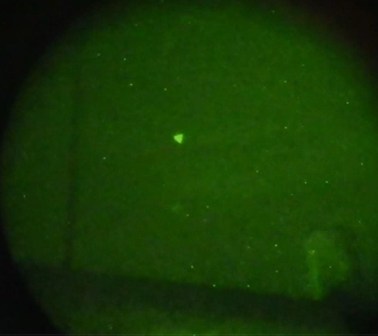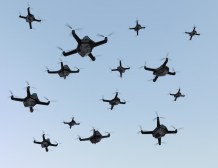Navy launches new unmanned ‘Saildrone’

The Navy launched a “Saildrone” to patrol the waters of the Red Sea, a new system that the Navy hopes will extend its development of artificial intelligence and unmanned vessels.
The 5th Fleet’s Saildrone Explorer is a 23-foot-long, 16-foot-tall unmanned vessel that uses the wind to propel it through the seas. Solar panels help power AI-enabled computers and sensors onboard that steer the vessel and collect data on its surroundings.
The boat is the first of many the Navy hopes to launch from its new “joint hub for Saildrone operations” at the Royal Jordanian Naval Base in Aqaba, Jordan.
Small unmanned systems are becoming increasingly popular for the military’s pursuit of digital operations and services. For the Navy, being able to send unmanned tech to collect data and potentially detect adversary activity is critical on the open sea, and could even be a part of offensive operations one day.
The Saildrone and other new digital tools stem from Task Force 59, a special group in the Navy’s Central Command focused on integrating AI and emerging tech into its operations. The Saildrone’s launch also kicks off a new exercise dubbed “Digital Horizon,” according to the Navy.
“These are exciting times for Task Force 59 as we team with the Royal Jordanian Navy to establish our hub for Red Sea operations in Aqaba and deploy some of our new maritime robotics,” said Capt. Michael Brasseur, commander of NAVCENT’s new task force for unmanned systems and artificial intelligence.
For the Navy, its focus on digital services has been to incorporate tech that can expand operations and data networks to increase its global maritime reach. Other projects within its digital umbrella have included unmanned vessels, but this is the first wind-powered boat that could offer a longer range without being tied to mechanical propulsion.
“Our Saildrones leverage machine learning and artificial intelligence to enhance maritime domain awareness, extending the digital horizon with a sustainable, zero-carbon solution,” said Brasseur.
Much of the military has been focused on using AI to increase domain awareness, or “over the horizon” sight, for its operations. The idea is to use the power of AI to sift through large quantities of data to create insights on data from across a battlefield, a capability stymied by stove-piped systems that often can’t communicate with each other.
The 5th Fleet is currently in the “early stages” of being able to add these kinds of integrations to its operations, it said. In October, the task force integrated and evaluated new small, portable autonomous vessels alongside crewed ships in the Arabian Gulf during an exercise. Earlier in December, the task force also initiated another at-sea operational test for a similar system off the coast of Bahrain.
“The U.S. Navy is learning important lessons that will inform future operational employment,” it said.

This story was featured in FedScoop Special Report: Transforming Digital Service - Presented by Dell Technologies






